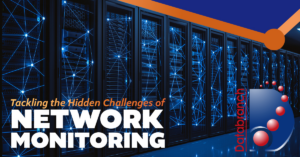
Are you prepared to face a cybersecurity breach, a natural disaster or a system failure? Such disruptive events can strike at any moment, causing chaos and confusion.
But don’t worry. With an effective incident response plan in place, you can handle any incident with confidence.
This blog is intended to help you enhance your plan simply and straightforwardly. So, let’s dive in and make sure you’re ready for whatever comes your way.
Best Practices for Effective Incident Response Planning
To be well-prepared for any incident, it’s important to follow the steps below:
1. Identify and Prioritize Critical Data and Assets
Knowing precisely what resources you have helps you allocate them efficiently during an incident, saving time and minimizing overall damage. Threat modeling is a process used in cybersecurity that is beneficial in this regard. It involves identifying potential threats and vulnerabilities to an organization’s assets and systems.
2. Establish a Dedicated Team
A cohesive and well-trained team with clearly defined roles can work together to ensure an efficient and effective response.
3. Conduct Regular Trainings
Regular training helps keep your team informed of the latest techniques and threats, ensuring they can handle any situation with confidence. Our Breach Prevention Platform and Security Awareness Training that comes with simulated phishing tests that will train your employees in spotting real world threats.
4. Implement Continuous Monitoring
Continuous monitoring systems can detect incidents early and take action before they escalate, potentially saving your organization from significant damage.
It is critical for any business to survive and thrive in today’s cybersecurity environment which is why Databranch provides a 24 x 7 proactive monitoring and alerting service for our managed clients. Visit us here to learn more and get started.
5. Establish Clear Communication Channels
Clear communication channels within your team and with external stakeholders ensure that everyone is on the same page during the response, minimizing confusion and errors.
6. Develop a System to Categorize Incidents
Categorizing incidents based on their severity and impact ensures that you can respond appropriately to each incident, minimizing long-term damage to your organization.
How we can Help
All businesses today must have a solid incident response plan against ever-evolving cybersecurity threats. That’s where Databranch can be your strategic partner and your first line of defense against cyberstorms.
If you’re uncertain about how to approach incident response planning, we can help you in the following ways:
- We’ll customize an incident response plan that aligns with your goals and challenges.
- We’ll identify vulnerabilities and rank incident response planning through risk assessments.
- We’ll help you build a fully equipped incident response team with clear roles.
- We’ll suggest and apply advanced security technologies to boost your detection and responsibilities.
- We’ll establish continuous monitoring to detect and respond to potential security incidents quickly.
- We’ll ensure that your incident response plan complies with legal and regulatory requirements.
- We’ll assist with post-incident analysis to refine response plans based on lessons learned.
Take Control of your Incident Response Plan
Don’t wait for a security breach to happen. Our team has years of experience and expertise to ensure the safety of your data. Take charge of your incident response plan now by contacting us at 716-373-4467 option 6, or [email protected] to schedule a no-obligation consultation with our team of experts.
You can also download our infographic to review the 4 stages of an incident response plan.
Read More

Your network is your business’s lifeline.
A healthy and secure network is critical for seamless communication and operational efficiency. That’s why it’s crucial to proactively identify issues and optimize performance through continuous network security monitoring.
However, as you keep a close watch, you’ll discover many issues lurking beneath the surface. In this blog, we’ll take a look at these hidden challenges and how to tackle them to ensure robust network security.
Hidden Challenges of Network Monitoring
Here are some of the challenges that hide in plain sight and impact your business more than you realize:
Data Overload
There are various devices and systems connected to a network, and at times they can generate an overwhelming volume of information, slowing down the monitoring process.
The sheer abundance of information makes it challenging to manage, analyze or derive any meaningful insights from the data. In such a situation, you can easily miss out on critical issues that can adversely affect your business.
Complexity
Modern networks are complex. Every device, application or system within the network is diverse. Without sophisticated tools and specialized expertise, it would be like solving a puzzle blindfolded.
The best way to deal with this challenge would be to reach out to Databranch who can efficiently streamline the entire monitoring process.
Integrations with Legacy Systems
Integrating older legacy systems seamlessly into modern monitoring frameworks can be tough. Failing to properly integrate older tools with current technology can leave visibility gaps and affect the overall performance.
That’s why it’s mission-critical for your business to implement monitoring solutions that not only keep pace with evolving technologies but also seamlessly integrate with older systems as well.
Costs
To ensure your network monitoring tools offer peak performance, you must keep up with the latest tech. However, monitoring tools are expensive, and businesses with budget constraints might find themselves vulnerable to the latest cyberthreats.
That’s why Databranch offers a suite of cost-effective managed services that proactively monitor and support your network and technology infrastructure.
Scalability
As your business grows, so do the number of devices connected to your network and the volume of data as well. However, if your monitoring tools can’t scale to meet the need, it will adversely affect its ability to provide accurate and timely insights.
To overcome scalability issues, you must invest in monitoring solutions that can expand and keep up with your growing needs.
Privacy Concerns
As part of the network monitoring framework, the tools and solutions may record and analyze sensitive data, raising compliance concerns and privacy challenges. The problems related to privacy arise when the network monitoring practices don’t meet compliance standards, leading to legal repercussions and penalties.
That’s why it is a good practice to implement robust security measures, adopt encryption technologies and adhere to relevant privacy regulations. The NIST Cybersecurity Framework is a popular, user-friendly framework that empowers business leaders like you to boost organizational cybersecurity.
Businesses with solid cyber risk management strategies can build formidable cyber defenses, minimize risks, and reduce compliance and privacy concerns.
Skill Gaps
To efficiently monitor your network, you need professionals with expertise in network monitoring. However, it can be challenging to hire employees who can achieve results without compromising your business needs.
Databranch provides a 24 x 7 proactive monitoring and alerting service which allows you to take this off your plate and focus on your business needs.
Dynamic Environments
A network is like a thriving ecosystem that is constantly evolving, and your network monitoring efforts must stay up to date if you want to stay ahead of potential issues.
To address the challenge of dynamic environments, you must embrace agile monitoring solutions, leverage automation for quicker adjustments and adopt continuous improvement practices.
Achieve Sustained Growth
Overcoming your network challenges while ensuring your business runs smoothly can be tough, especially if you have to do it all on your own. Reach out to Databranch today at 716-373-4467 option6, or [email protected] if your business needs help. Not only can we secure and optimize your network, but also help your business achieve sustained growth.
Ready to transform your network challenges into opportunities? Download our checklist today to see where you network may need our expertise!
Read More










